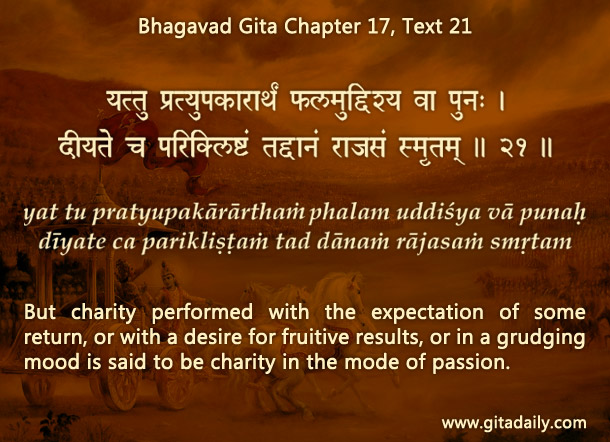Charity is usually a noble expression of the human virtue of compassion. Few joys in life are as sublime and fulfilling as the joy of helping wipe someone’s tears or bring a smile on their face. When done in a mood of helping others, charity expands our consciousness, by helping us tune to concerns beyond our self-centered concerns.
Yet not all charity is done with the same level of consciousness – when done primarily as an expression of the ego, “Just see how good I am,” charity can keep the consciousness locked in the temptation of wanting to be a controller of matter.
The Bhagavad-gita classifies everything in material existence into a typology of three modes, wherein the modes are shapers of the interaction between matter and consciousness. Normally, charity would be considered an activity in the mode of goodness, but not always. The Gita (17.20-22) indicates that charity can be in any of the three modes.
When charity is done in the mode of passion (Gita 17.21), its purpose is expanding one’s sense of power and prestige in controlling matter. Usually, those in passion control matter for their own immediate sensual gratification, but sometimes that control can be for indirect gratification by helping others enjoy matter. Such charity ends in vanity – it doesn’t take us towards liberation, nor does it grant any lasting fulfillment. The Gita right from its beginning takes us from the outer appearance of matter to the inner substance of soul and ultimately the Supersoul. Similarly, the Gita’s analysis of charity is meant to take us to the substance – to prompt deeper introspection so that our external expression of charity is accompanied by an internal intention of benevolence. The highest charity is spiritual charity: the charity that helps people link spiritually with the Supersoul.

Explanation of article:
Podcast:

Leave A Comment